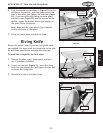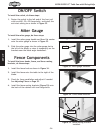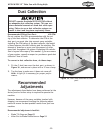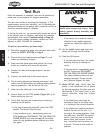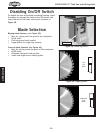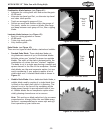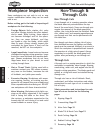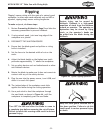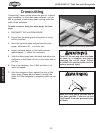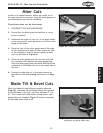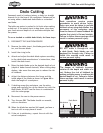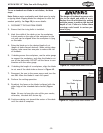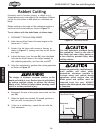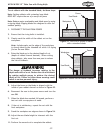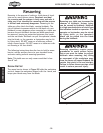
-31-
W1761/W1762 12" Table Saw with Riving Knife
OPERATIONS
Ripping
"Ripping" means cutting with the grain of a natural wood
workpiece. In other man-made materials such as MDF or
plywood, ripping simply means cutting lengthwise.
To make a rip cut, do these steps:
1. Review Preventing Kickback on Page 9 and take the
necessary precautions to prevent kickback.
2. If using natural wood, joint one long edge of the
workpiece on a jointer.
3. DISCONNECT THE SAW FROM POWER!
4. Ensure that the blade guard and splitter or riving
knife is installed.
5. Set the fence to the desired width of cut on the
scale.
6. Adjust the blade height so the highest saw tooth
protrudes approximately
1
/4" above the workpiece.
7. Set up safety devices such as featherboards or other
anti-kickback devices.
8. Rotate the blade to make sure it does not come into
contact with any of the safety devices.
9. Plug the saw into the power source, turn it ON, and
allow it to reach full speed.
10. The jointed edge of the workpiece must slide
against the fence during the cutting operation.
11. Use a push stick to feed the workpiece through
the saw blade, as shown in
Figure 44, until the
workpiece is completely past the saw blade.
Serious injury can be caused by
kickback.
Kickback is a high-speed
expulsion of stock from the tablesaw
toward an operator. The operator or
bystanders may be struck by flying
stock, or the operator’s hands can
be pulled into the blade during the
kickback.
Figure 44. Typical ripping operation.
Keep the blade guard installed and in
the down position. Failure to do this
could result in serious personal injury
or death.
Turn OFF the saw and allow the blade to come to
a complete stop before removing the cut-off piece.
Failure to follow this warning could result in serious
personal injury.



